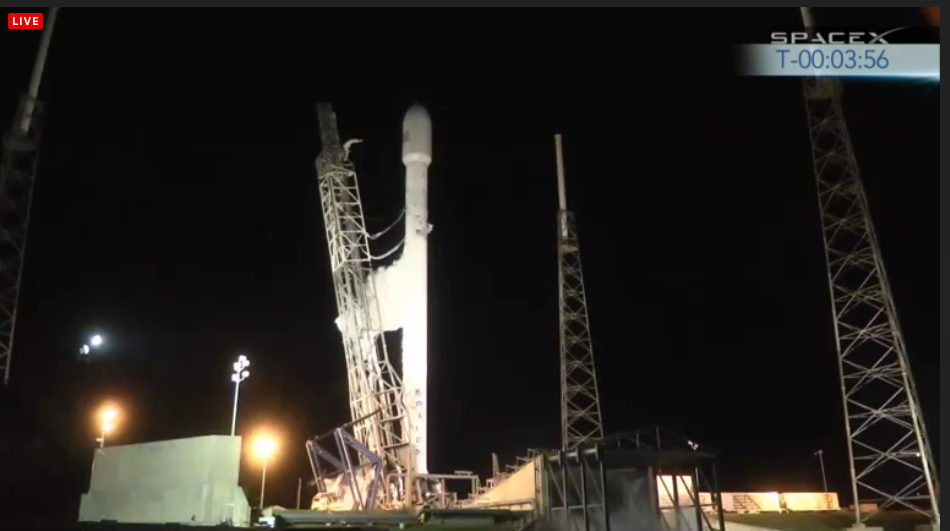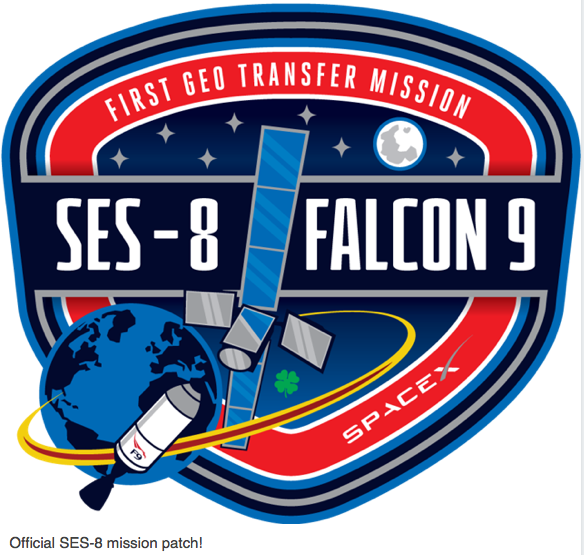[SatNews] A launch will put this satellite into an elliptical orbit that reaches more than 50,000 miles (80,000 km) from Earth, about a quarter of the way to the moon.
UPDATE 11.28.13:
LAUNCH UPDATE: Thursday's abort was caused by oxygen in the ground side igniter fluid (TEA-TEB). Rocket engines are healthy, but cleaning turbopump gas generators will take another day. Earliest possible launch attempt is Monday evening.

The strong back was released at 4 minutes and holding.
Previous to this delay, earlier this last week:
A SpaceX Falcon 9 rocket launch from the Space Coast, Launch Complex 40 at Cape Canaveral Air Force Station in Florida scheduled for today was scrubbed. The third launch attempt was halted with 3:40 left in the countdown after a SpaceX engineer saw a problem with a system to keep the Falcon 9's liquid oxygen fuel pressurized.
According to Hannah Post, Media Relations for SpaceX, "We observed unexpected readings with the first stage liquid oxygen system so we decided to investigate. The launch vehicle and satellite are in great shape and we are looking forward to the next launch opportunity on Thursday at 5:38 p.m. Eastern time.
Since the launch window was closing only 16 minutes later, that put an end to today's launch attempts. The next launch window is tentatively set for Thursday, Thanksgiving Day, with a new launch time of 5:30 pm CST..
Perched on top of the rocket is a 6,400-pound (2,900 kg) communications satellite owned by Luxembourg-based SES S.A., which currently operates a 54-satellite fleet, the world's second-largest.
The satellite, known as SES-8 and worth about $100 million, will be positioned to provide television, cable, broadband and other services to customers in India, China, Vietnam and other markets in Asia.

"It's an extremely important satellite for us," Martin Halliwell, chief technology officer of SES, told reporters on Sunday in Cocoa Beach, Florida.
"We know that as we go forward into these very significant growth markets that it's absolutely critical that we have a cost-effective and efficient way to get to orbit. That's really what SpaceX has brought us," Halliwell said.
SpaceX will aim to put SES-8 into an elliptical orbit that reaches more than 50,000 miles (80,000 km) from Earth, about a quarter of the way to the moon.
That altitude requires less fuel for SES-8 to fly itself into its 22,369-mile (36,000-km) high operational orbit, thereby extending its service life.

